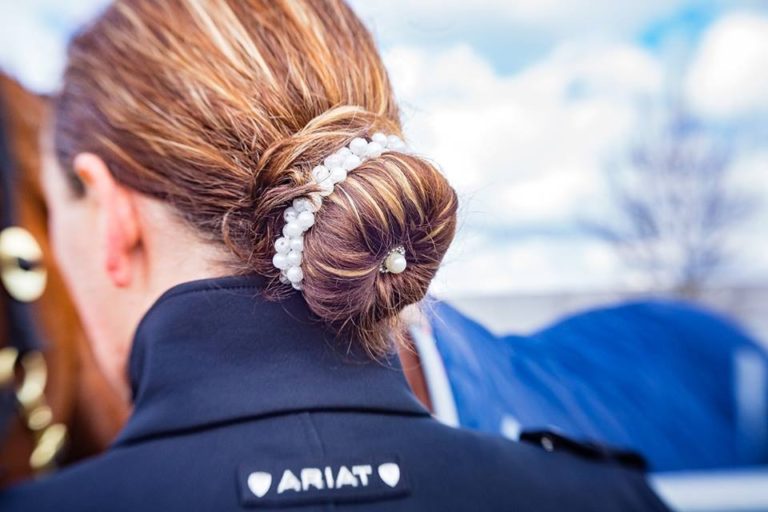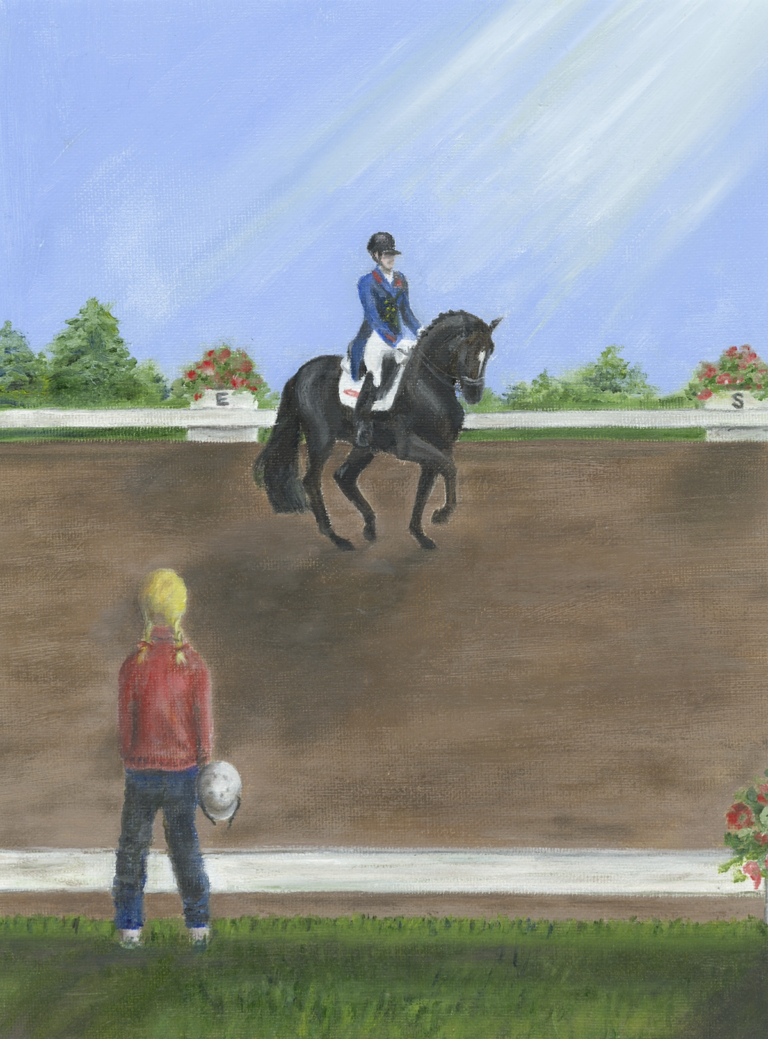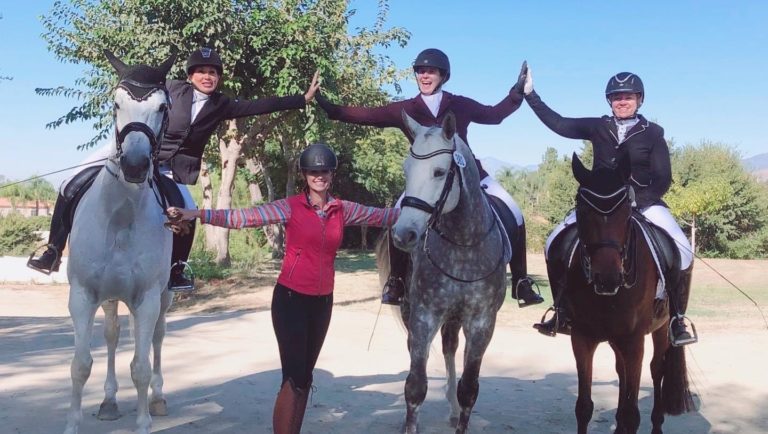Heather Sansom is the author of rider fitness ebooks Complete Core Workout for Rider, and a regular columnist in several equestrian publications including Dressage Today.?EquiFITT.com offers rider fitness clinics & workshops, Centered Riding? instruction, and convenient distance eCoaching for riders anywhere.? Subscribe to receive free monthly Equestrian Fittips, and download rider fitness eBooks at:??www.equifitt.com/resources.html
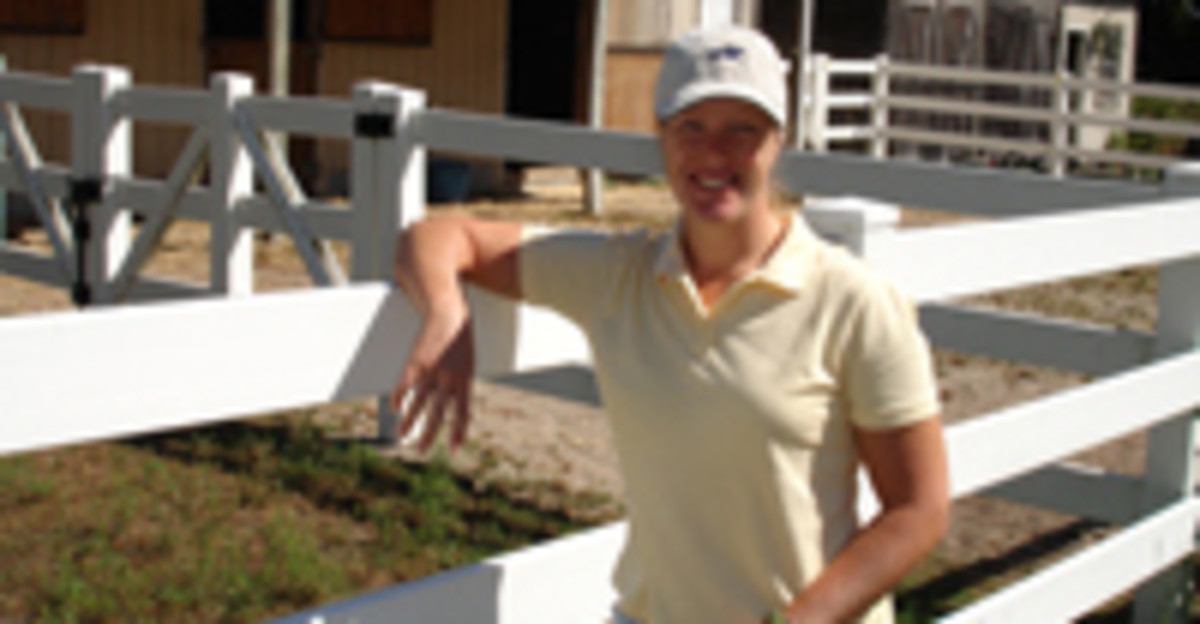
In recent pieces we’ve discussed at how the rider’s seat informs movement both upwards (torso and shoulders) and downwards (thighs and legs). We’ve also discussed why symmetrical movement pattern is so important in a rider’s body, and how it can be impeded negatively by structural issues (skeletal misalignment/other chiropractic issues), muscle and ligament tightness (perhaps leading to massage or other release technique therapies) and muscle strength imbalances, especially in rotational movement.
Since a rider requires symmetry in dynamic motion, rigidity, tension and firing pattern (neuro-muscular stimulation sequence and strength) asymmetry can block your ability to move with your horse, and respond pro-actively and effectively as you ride. In other words if you have a ‘lazy left’ hip, tight shoulders or hips or are bracing yourself in an attempt to create the correct posture, you are working against yourself and your horse.
Movement patterns in your body, which are required in riding, can sometimes be quite complex, resulting in your instructor’s directions sometimes seeming contradictory. A basic understanding of how your muscles work together to support your skeleton in the position of riding can help you, in much the same way understanding your horse’s anatomy can help you understand his movement.
Traditionally, we have an idea that muscles cross a joint and act in a specific direction. For example, your biceps raise your hand holding the reins and your inner thigh muscles (adductors) pull your legs inward when you apply a leg aid. You can probably visualize your quadriceps in action on the front of your thigh when you are holding yourself in a two-point position over a training rail or in posting trot. In traditional anatomical thinking applied to conditioning, a trainer might have you isolate a muscle during an exercise. A bicep curl is a clear example.
In fitness and conditioning, thinking in terms of movement patterns rather than isolated muscle action is integral to functional conditioning for any sport. If you have seen warm-ups for dancers, plyometric training for hockey players or other cool movements with resistance tubing and free weights, or even martial arts, then you have observed integrated movement training. In Equifitt programs, we use mostly integrated movement training, after first training the building blocks for a movement sequence because a rider sitting on a horse is a system of movement patterns acting simultaneously. You do not have the luxury of isolating muscles consciously very often when you are riding.
Let’s use posting trot and the quadriceps as an example. In traditional fitness, a trainer might have you sit on a machine, hook your legs under a padded arm and push the lower leg outward to perform a knee extension with the goal of building up your quadriceps. Exercises like this do build quadriceps. And there are times when you need to isolate and address a muscle in this fashion. However, sports require movement, so training the quadriceps to move and strengthening them in their full range of motion is more important for sport conditioning. You will often see sport coaches use lunges, squats and hill or stair climbing to strengthen quadriceps instead. Incidentally, those movements also simultaneously strengthen many other muscles too, especially the hamstrings which are on the back of your legs, and your gluteals. This is because in real movement requirement, those quadriceps never have to act on their own. They produce motion in conjunction with your other major muscles in your legs and behind.
By the way, I really like to have riders do lunges and squats, not only because they strengthen your legs in full range, but because they are so efficient: you don’t need special clothing or shoes, and can squeeze a few in here and there in the barn aisle, pasture, office or wherever.
Actually, use of the quadriceps in riding is commonly mis-understood by non-riding trainers, who assume that standing in the stirrups is similar to performing a squat or pli? on the ground. On the flat, riding means riding the wave of your horse’s movement in a posting trot, for example. We know that the horse’s momentum and spring partially carries you upward, reducing the amount of force you actually need from your own legs as compared to moving yourself off the ground against gravity. You also engage your inner thigh in the movement and avoid shoving against the stirrup. This means that your inner thighs are helping your movement up out of the saddle.
So, quadricep strength and power is not as directly important to riding as to other sports. However, it’s still necessary for you to train your leg strength because your leg muscles are not engaged in such a way when you ride as to maintain them in the optimal ratio for you as a bi-ped (walking on the ground on two legs). What this means is that hip and knee issues can become a problem because the quadriceps cross both these joints. You may want to only worry about how you move in the saddle, but the reality is that compromise in your movement and joint integrity for the movement you were created for (walking upright on your feet) will eventually compromise your movement in the saddle because it will reduce motion and affect alignment in you structurally.
Riders who spend nearly their entire ride up out of the saddle (cross country or stadium jumping for example) usually have stronger quadriceps than riders who are seated more in the saddle. However even when your legs are supporting more of your body in your ride, they are not usually engaged in full range of motion for the muscles, creating strength in a limited range. Another way to look at strength in limited range is to think of it as weakness in more range than you are strong-placing you more at risk for injury and repetitive strain. It is easy to see in jumping how quickly your body can be moved out of it’s comfortable range into some other position, even momentarily. On a moving horse, you are only a split second away from an accident or strain.
In addition to leg strength, you want to pay attention to how your body works left to right, because of the movement system that keeps you stable and symmetrical on a centre of gravity over your horse’s spine. We’ve just discussed how your inner thighs can engage (in/out plane) in movement that takes you up and down (posting trot). There’s even more to it. Think of your structure a bit the same as a teeter-totter. If force is applied on one side, roughly equal force is need on the other to avoid collapse. You have muscles that work together on opposite sides of your body.
To go back to the example above with quadriceps, in traditional anatomical view of training, your quads are opposite your hamstrings (back of your legs) and therefore training is thought of in terms of opposite actions. For example, knee extensions for quadriceps, and hamstring curls (on stomach with feet hooked around a machine) for the back of the legs. In sport conditioning or integrated movement training, it becomes pretty clear pretty quickly that the quads and hamstrings we originally thought of as opposing each other, actually work together as synergists to propel you.
On a horse, the tendency is to think rather simply about inner thigh strength. We use that area to apply leg aids, and we balance on the horse with support from inner thighs. When I am observing a rider with asymmetrical leg aids (one weaker, one stronger or difficulty with lateral movements being even in both directions), it would be too easy to just assume that the rider need to beef up their inner thigh strength. Often apparent leg strength issues are actually balance issues in the rider, and not leg strength issues at all. When you are balanced, you can use very light aids. In “Smaller Steps for Greater Balance,” Kyra Kyrklund discussed the importance of balance in the rider to create balance in the horse.
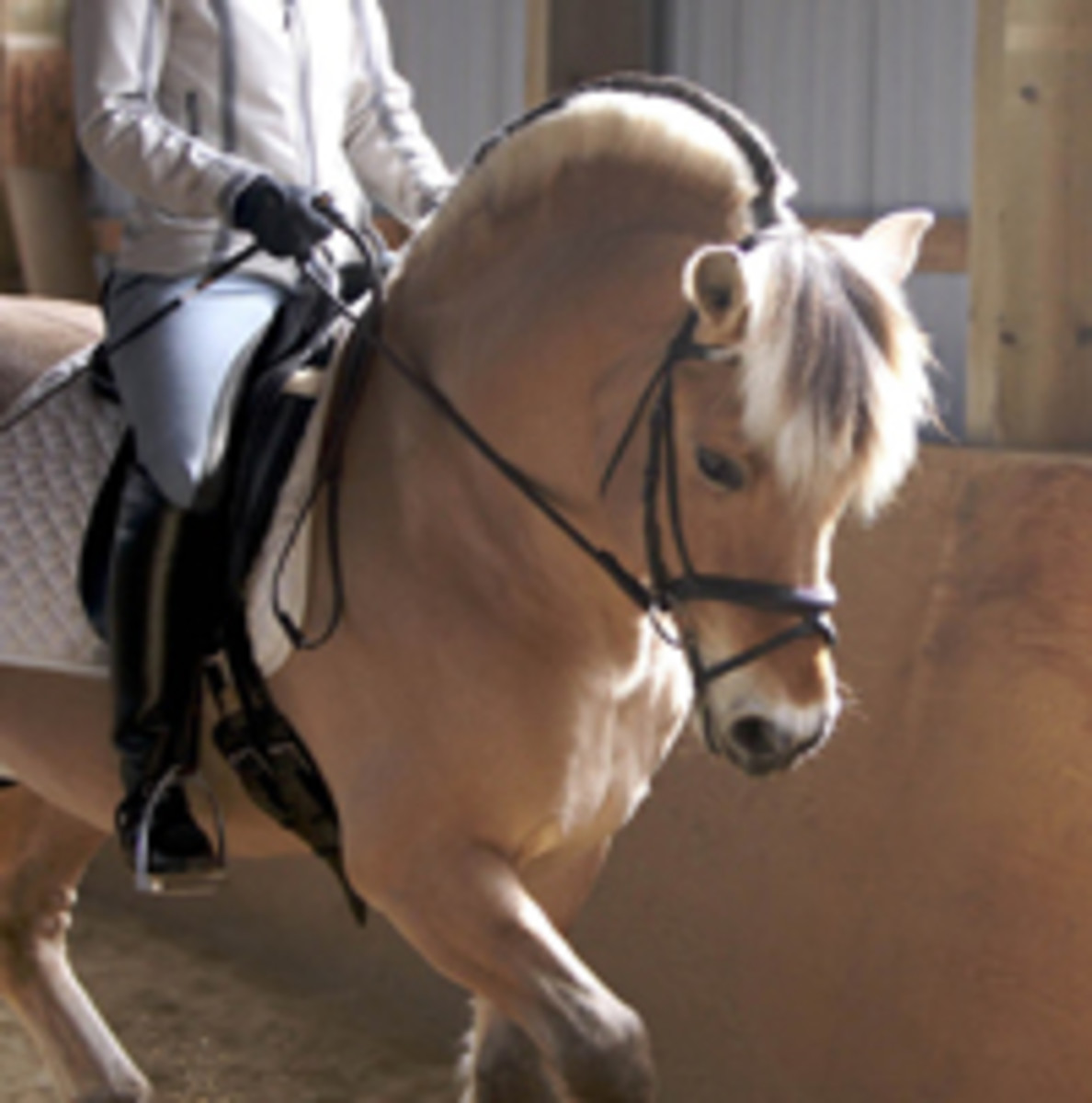
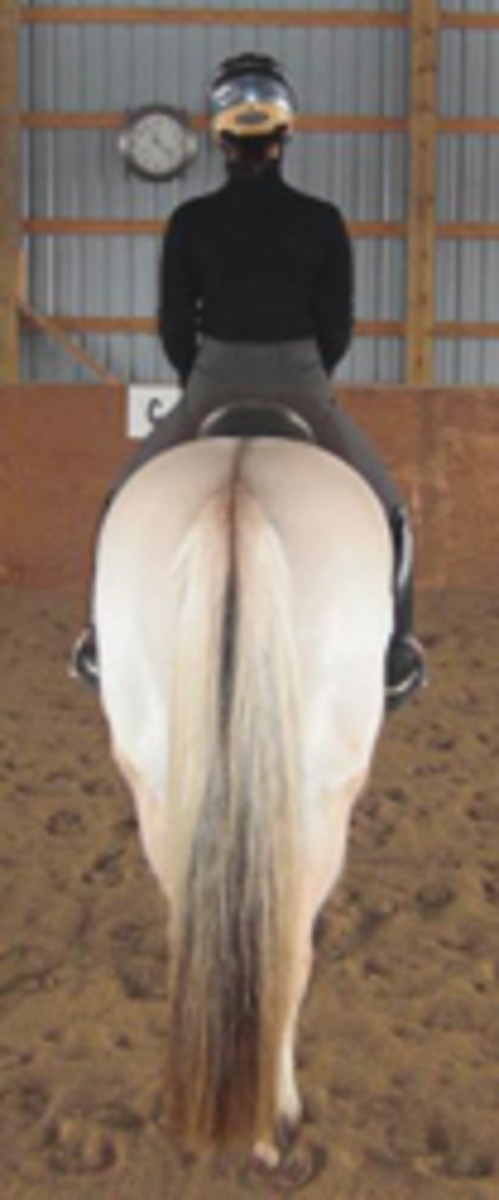
The balance issue is of course impacted by core strength, and by correct engagement of the core. Your core, or torso, is the connecting bridge between the synergistic muscles groups supporting you left to right. In the saddle, your inner thigh is supported by the opposite gluteus medius (muscles in upper hip area on the opposite side). Moreover, your lower back and hip area on one side are connected to your shoulder area on the opposite side. There is a strong likelihood for example, if your left shoulder falls back, that your right hip will also have a tendency to do so. These patterns can be visualized as “Xs” on your body. In other words, straightness and symmetry in your seat bones and shoulders is about a lot more than just having strong long back or abdominal muscles.
Most people have a slight rotation or twist in their posture created by imbalance in the strength of these lines of connected movement pattern, so it can be helpful to train with cross-body coordinating strength exercises. Another benefit of cross-body coordinating exercises in your training is that they help your brain wire left to right, and read the left-to-right movement of your quadruped horse more accurately.
One of the most common errors with training cross-body movement is to focus on the front part of the body. We already have a tendency to tightness in the front, and lack of supporting strength in back and sides due to a lifestyle of automobiles and desk jobs. Barn chores can also increase the imbalance in the upper body. So, a complete plan for training your torso and limbs to work opposite parts together must be balanced with work for the back and sides.
Some exercises I suggest are the ‘Starfish’ crunch, the Standing cross body crunch, opposite arm/leg raises and standing work engaging your opposite hip and shoulder.
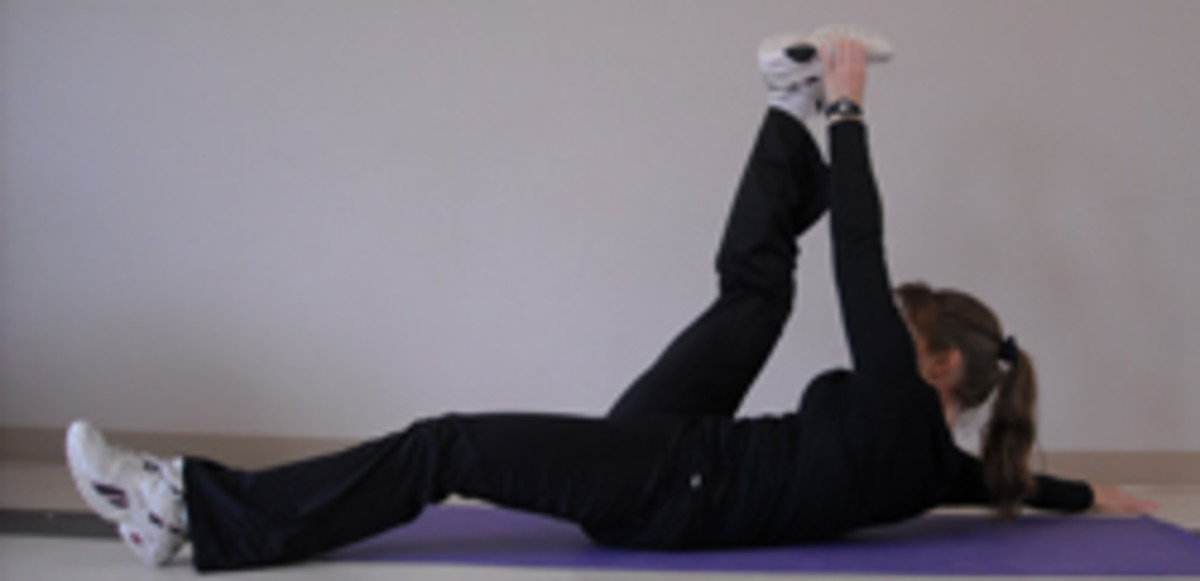
1. Starfish crunch: start by lying on the ground with arms and legs in an X pattern like a starfish. Bring the opposite ankle and hand together as high above your body as you can, forcing you to lift your hip and shoulder off the floor. I suggest twenty to forty repetitions in both directions, several times a week.
2. Standing cross body crunch: start with your arms out and shoulder height and legs wide. Bring your knee up and across your body toward the opposite armpit, while simultaneously bringing your opposite shoulder toward the knee. You should feel your abdominals engage strongly. This is also an excellent balance training exercise. You can start out supporting yourself with your free hand against a wall or railing, but be careful not to shorten the movement, or cheat by leaning too much of your weight on the support.
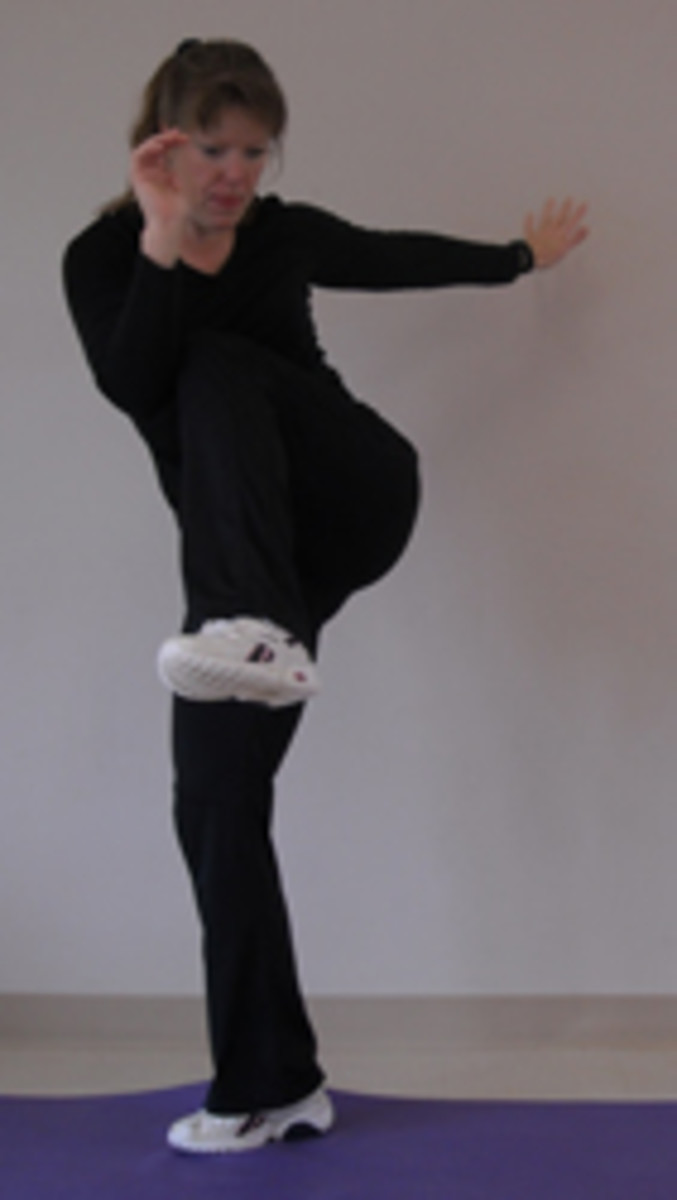
3. Opposite arm and leg raise: you can do this exercise lying on the floor, on all fours, or supported with a ball or footstool under your belly. Raise the opposite arm and leg to about equivalent height, while maintaining a straight back. Do not let your body just fold at the lower back, as this would create strain in your lower back. You should only lift limbs as high as you can without strain to your lower back.
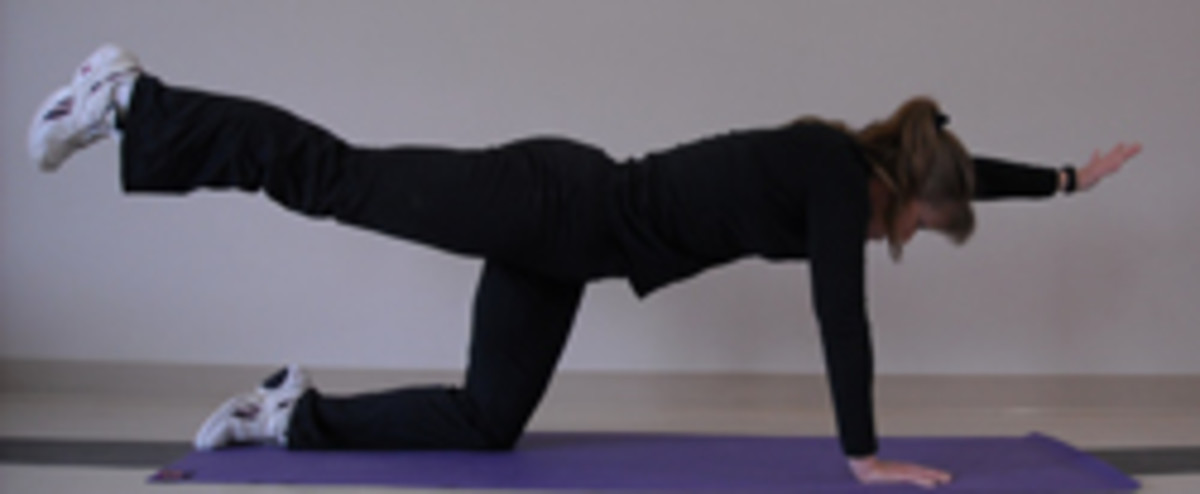
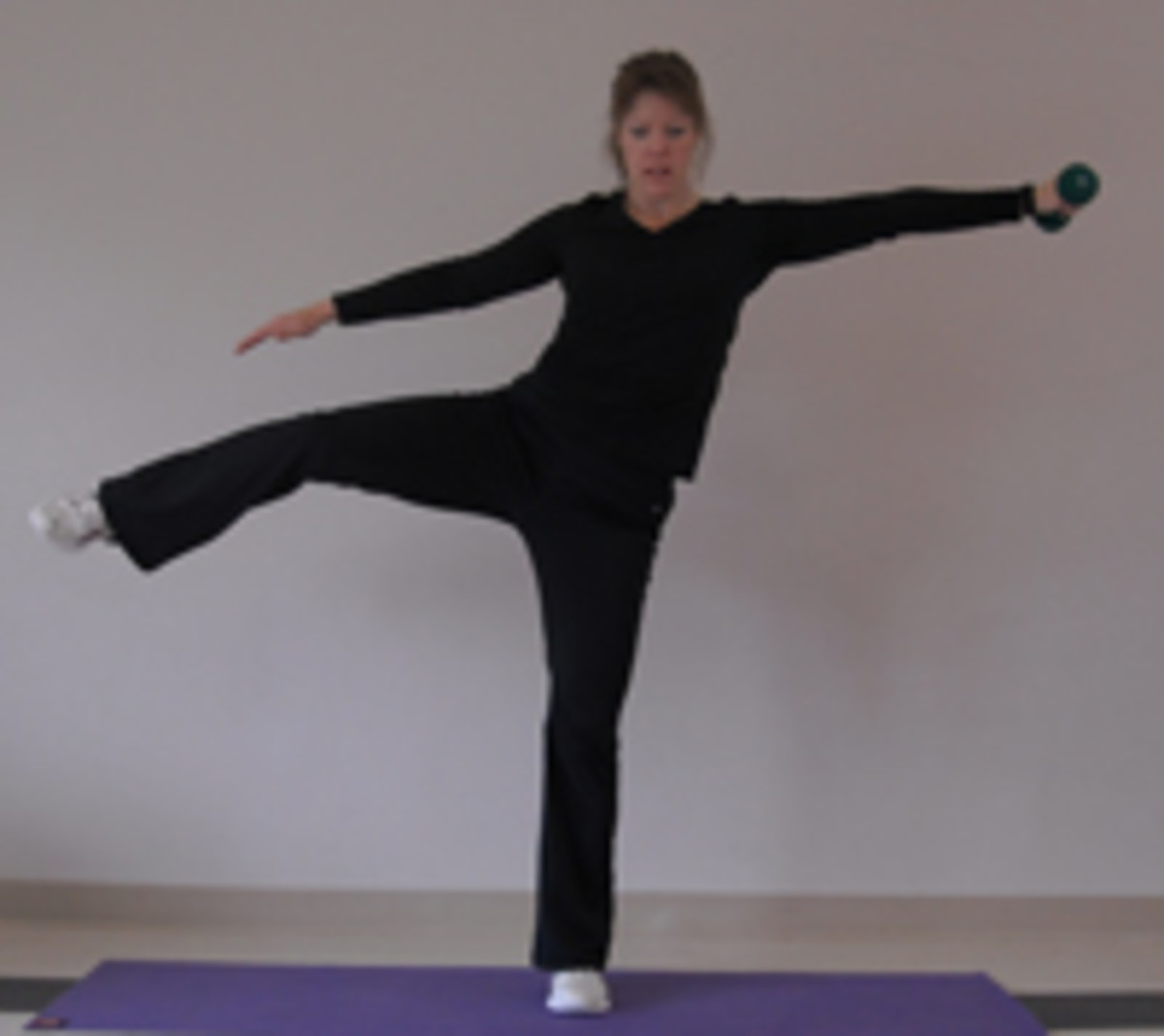
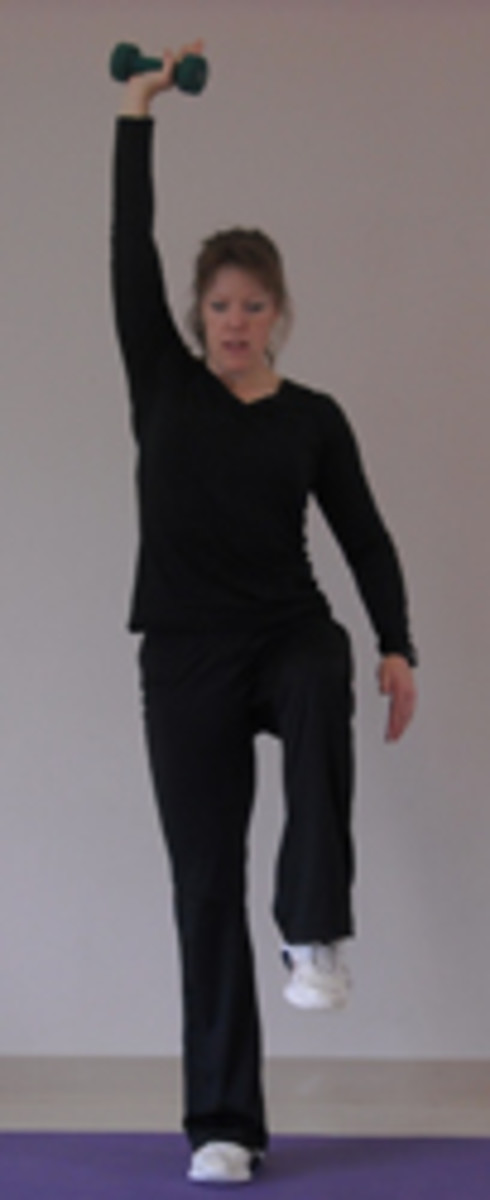
4. Opposite shoulder/leg work. In one photo, you can see a single arm overhead press with an opposite knee raise. In the other, you see a lateral raise for the shoulder, with an opposite outward leg raise. Note that the foot is kept parallel to the floor (toe must not turn up) in order to isolate the upper hip area, which is your gluteus medius. Both exercises simultaneously engage the core and force you to maintain straightness and balance.
CALL FOR TOPICS: Over the past several months of Rider Fitness articles, we have covered many topics related to rider fitness. We would be interested in knowing more about the topics and issues you’d like to hear about. Please write to personaltraining@equifitt.com to suggest topics you’d like to see covered in future pieces.



